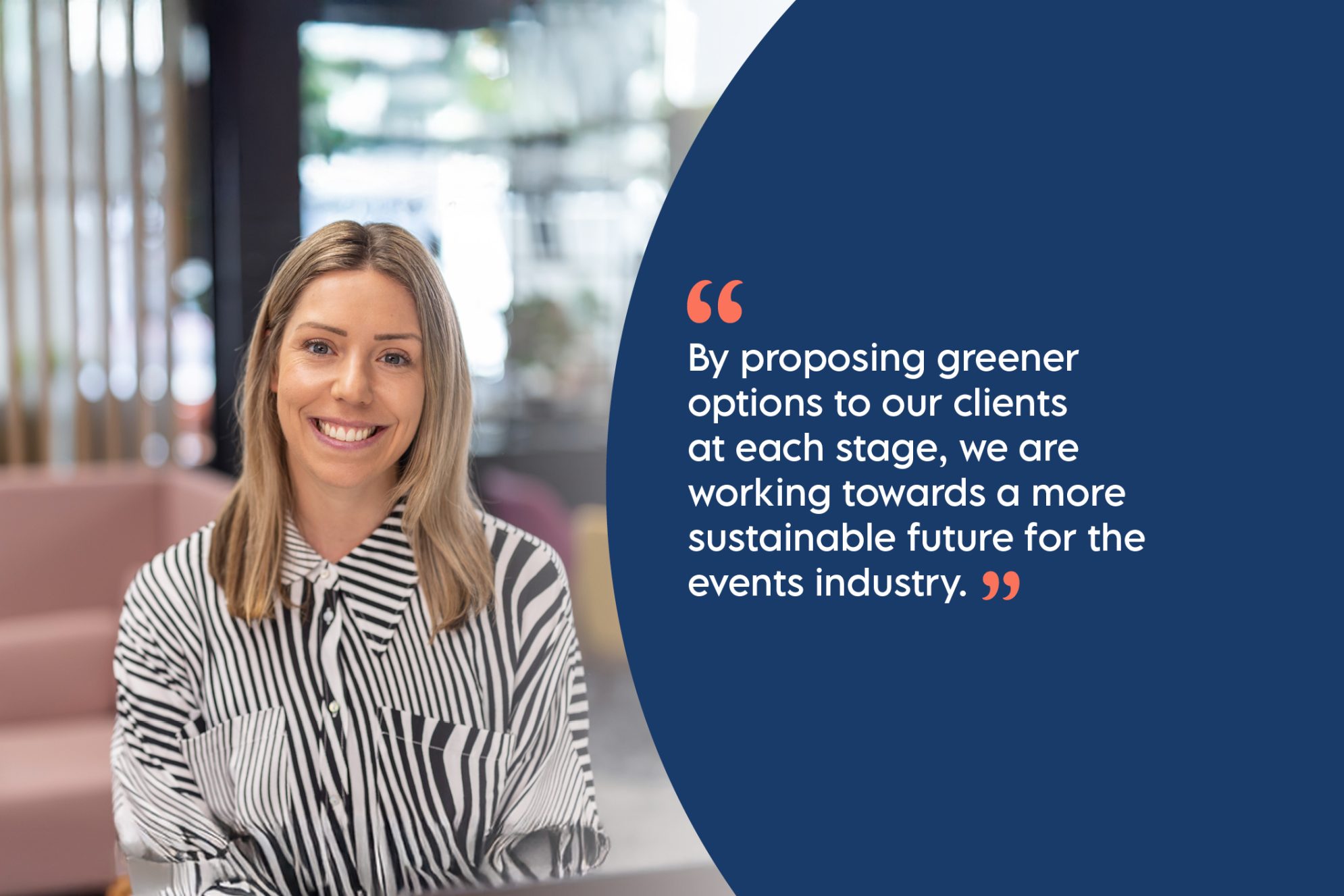
Some of the ways we create more sustainable events
Environmental awareness is at an all-time high and the events industry is shifting towards sustainability. Virtual events have exploded in popularity since Covid but in-person events remain vital for networking, engagement and providing immersive experiences that virtual events cannot replicate.
At Freshwater, we are committed to making our events greener. We work with suppliers to balance creativity and environmental responsibility, offering eco-conscious solutions at every stage of event planning. While sustainability is a huge topic, this article highlights some of the steps we take to work towards a greener future.
Benefits of in-person events
Despite their environmental impact, in-person events offer significant advantages. They promote stronger networking opportunities, allowing for authentic connections that are harder to replicate in virtual settings.
The energy and engagement at live events create a more memorable experience, helping attendees absorb and retain information more effectively. Exhibitors also benefit, as attendees are more likely to visit physical stands and engage in meaningful conversations, over the virtual alternatives.
Pre event
Sustainability starts at the planning stage. From selecting the right venue to engaging with eco-conscious suppliers, early decisions can significantly reduce an event’s environmental footprint.
When choosing a venue, we prioritise those with strong sustainability credentials, such as renewable energy use, robust recycling schemes and accessible public transport options. Once a venue is confirmed, we communicate its sustainability measures to delegates, helping to influence greener choices—such as car-sharing or using public transport.
Previously, we have collaborated with Carbon Consultancy to measure and offset an event’s carbon footprint. To do this we monitored emissions from venues, travel, suppliers and products at the start of the project. This allowed us to look at the carbon footprint of each aspect and more importantly ways for reducing carbon early on. In this instance we changed much of our large format print and signage to digital screens, reduced the high-carbon footprint meat options and completely removed flowers from our proposal for table centres. At the end of the project we looked at how much carbon we had saved by making adjustments to our plans and offset the rest.
Encouraging attendees to make sustainable choices is another key aspect. We have worked with You.Smart.Thing, which offers personalised travel plans showing the carbon impact of different transport choices, to provide information on greener travel options to delegates. Small actions such as asking attendees to notify us if they no longer plan to attend in our joining instructions provide an opportunity to reduce catering numbers and prevent food waste.
Our commitment to sustainability also extends to event materials. We avoid printing dates on lanyards and signage, allowing them to be reused. Name badges are made from recycled Forest Stewardship Council (FSC)-certified card and we work with suppliers who use sustainable materials for sets and signage. Renting furniture and equipment instead of purchasing new, further reduces waste.
When it comes to catering, we advocate our clients to prioritise seasonal, locally sourced and plant-based menu options, reducing the carbon footprint of event catering. If entertainment is required, we suggest considering social sustainability by hiring local performers and cultural groups, ensuring a positive impact on the community.
At event
Once the event is underway, our focus shifts to reducing waste and maximising efficiency.
Single-use plastics are avoided where possible and delegates are encouraged to bring reusable water bottles and travel cups. Recycling stations are provided where necessary to ensure waste is properly managed.
Digital solutions replace printed materials wherever possible. QR codes link to agendas and event details, reducing the need for printed programmes. Digital signage takes the place of posters, further cutting down on paper use.
Food waste is another critical consideration. Where venues permit, we partner with local food banks or charities to donate surplus food, ensuring it does not go to waste. Additionally, at the end of the event, we collect lanyards to be reused for future events where possible.
Post event
Sustainability measures don’t end when the event does. We assess impact, repurpose materials and refine our approach for future events.
If there are any event materials that we can’t reuse, we would contact companies like EventCycle to repurpose them ensuring they are given a second life rather than ending up in landfill. If appropriate, any insights gained from sustainability measures—such as waste reduction statistics or carbon offset details—are shared in post-event communications with attendees.
Tracking energy use, waste and the overall carbon footprint of the event informs our planning process for future events, ensuring we continue to improve and innovate.
In summary
Embedding sustainability into events requires careful planning, mindful execution and post-event evaluation. While we cannot cover every possible measure in one article, these are some of the steps we take to reduce environmental impact. By proposing greener options to our clients at each stage, we are working towards a more sustainable future for the events industry.
To learn more about Freshwater’s approach to sustainable events, explore our case study on British Ports Association (BPA).
